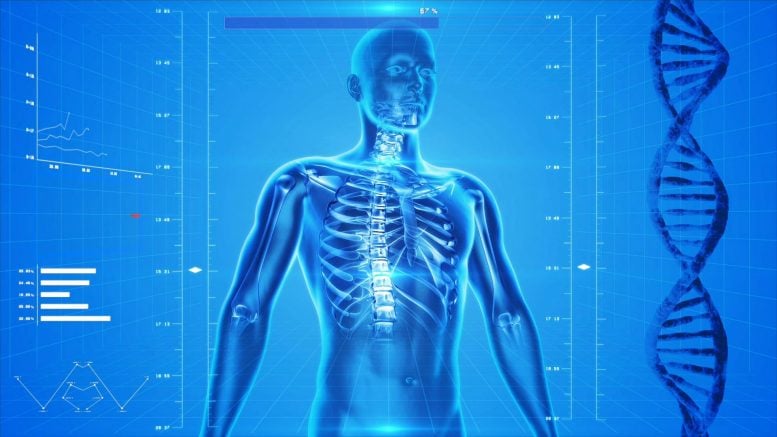
Since the start of the pandemic, scientists have learned that SARS-CoV-2, the virus that causes COVID-19, is quite cunning. When the virus enters the body, it’s capable of turning off an entire branch of the immune system, allowing it to spread for days before the immune system can sound the alarm on the intruder.
However, researchers still don’t know the full scope of tissues and cell types that are most vulnerable to SARS-CoV-2. Most research has focused on identifying genes and pathways that facilitate the virus’s entry into lung cells – yet both clinical and scientific data indicate that it can cause damage in a wide range of organs.
Now, new Cornell research has developed potential roadmaps for how the virus infects these other organs and identifies what molecular factors could help facilitate or restrict infection.
“The data suggest that it’s not just a respiratory disease. It’s much broader than that, and it has the potential to affect many other organs,” said Cedric Feschotte, professor in the Department of Molecular Biology and Genetics, in the College of Agriculture and Life Sciences. “Our analyses suggest that there is a wide range of cellular vulnerabilities.”
Feschotte is the lead author of “A Single-Cell RNA Expression Map of Human Coronavirus Entry Factors,” published on September 3, 2020, in Cell Reports. Other co-authors are Manvendra Singh, a postdoctoral associate in the Feschotte Lab and a Cornell Presidential Fellow; and Vikas Bansal, a computational biologist at the German Center for Neurodegenerative Diseases in Bonn.
The new study maps the expression of 28 human genes dubbed “SCARFs” – SARS-CoV-2 and Coronavirus-Associated Receptors and Factors. By looking at the single-cell RNA expression of these genes, they can predict which tissues and cell types are most vulnerable to coronavirus infection – in both adults and embryos.
The team analyzed the RNA expression of healthy human tissues to develop a comprehensive profile of the molecular factors that both facilitate and restrict SARS-CoV-2 infection.
“You can learn which cells and organs are most likely to be infected – at least at the onset of an infection,” Feschotte said. “This is very important to emphasize, because once the virus infects a particular tissue, the [genetic] landscape might shift.”
Without the immune system’s ability to respond quickly, Feschotte said, naturally occurring restriction factors already present in the tissues represent the body’s main line of defense against SARS-CoV-2.
Mapping the different entry points for the virus also is essential for trying to predict where the virus will go after it enters the body. Moreover, by pinpointing the molecular routes of infection, other researchers can use those areas as targets for developing drugs to overcome the infection.
The study indicates alternate entry paths for how the virus could enter the lungs, central nervous system, and heart. Their research also supports emerging clinical data that shows SARS-CoV-2 also infect the intestines, kidney, and placenta. They noted that specific groups of cells within the prostate and testes are likely to be permissive for SARS-CoV-2 and may help explain male-specific vulnerabilities.
Additionally, this study enhances researchers’ knowledge of what happens when the virus interacts with nasal tissues, a hotspot for virus entry. The team reported that tissue on the roof of the nose canal, called the nasal epithelium, looks like a crucial battleground territory between the virus and nasal cells, because this tissue shows high expression of genes that both facilitate and restrict infection.
The researchers believe the outcome of the nasal battle could be critical in determining the course of an infection. Interestingly, they also observed a statistical difference in the expression level of these entry factors in the nasal tissue of younger people (under 30) versus older people (over 50).
“There were significantly more nasal cells expressing SARS-CoV-2 entry factors in old people compared to young people,” Singh said. While the group’s sample size was too small to draw a firm conclusion, he said, if this trend holds in larger cohorts, then “it could, in part, explain why old people are getting sicker than young people.”
The other crucial organ that Singh continues to examine is the placenta.
“We found that placental cells called trophoblasts seem to be vulnerable,” he said. “It is scary to think that if the placenta can get infected, then the virus may infect other fetal tissues, with harmful consequences for the health of the fetus, as observed with Zika virus.”
Feschotte noted that the placenta may still prevent newborns from getting infected while they’re in the womb. Current studies suggest that transmission between infected mothers and their babies during the third trimester of pregnancy is very rare. But he emphasized it’s still too early to say whether there is more risk of transmission in earlier stages of pregnancy and what consequences that might have on fetal development.
As part of this project, the team also developed an open-access, user-friendly web interface where anyone can look up the single-cell RNA expression of SCARFs. This will facilitate easy access to data that will help scientists around the world.
“This is a useful resource for COVID-19 but perhaps also for the next coronavirus pandemic – not that I wish one,” Feschotte said. “But we have to be realistic and better prepared. Part of being prepared is having the data out there.”
For more on this discovery, read Researchers Identify Possible New Entry Points for SARS-CoV-2 / COVID-19 Into the Human Body.
Jana Wiegand is the editorial content manager for the College of Agriculture and Life Sciences.
Reference: “A single-cell RNA expression map of human coronavirus entry factors” by Manvendra Singh, Vikas Bansal and Cedric Feschotte, Accepted 31 August 2020, Cell Reports.
DOI: 10.1016/j.celrep.2020.108175
Work in the Feschotte Lab on host-virus interaction is funded by the National Institutes of Health.